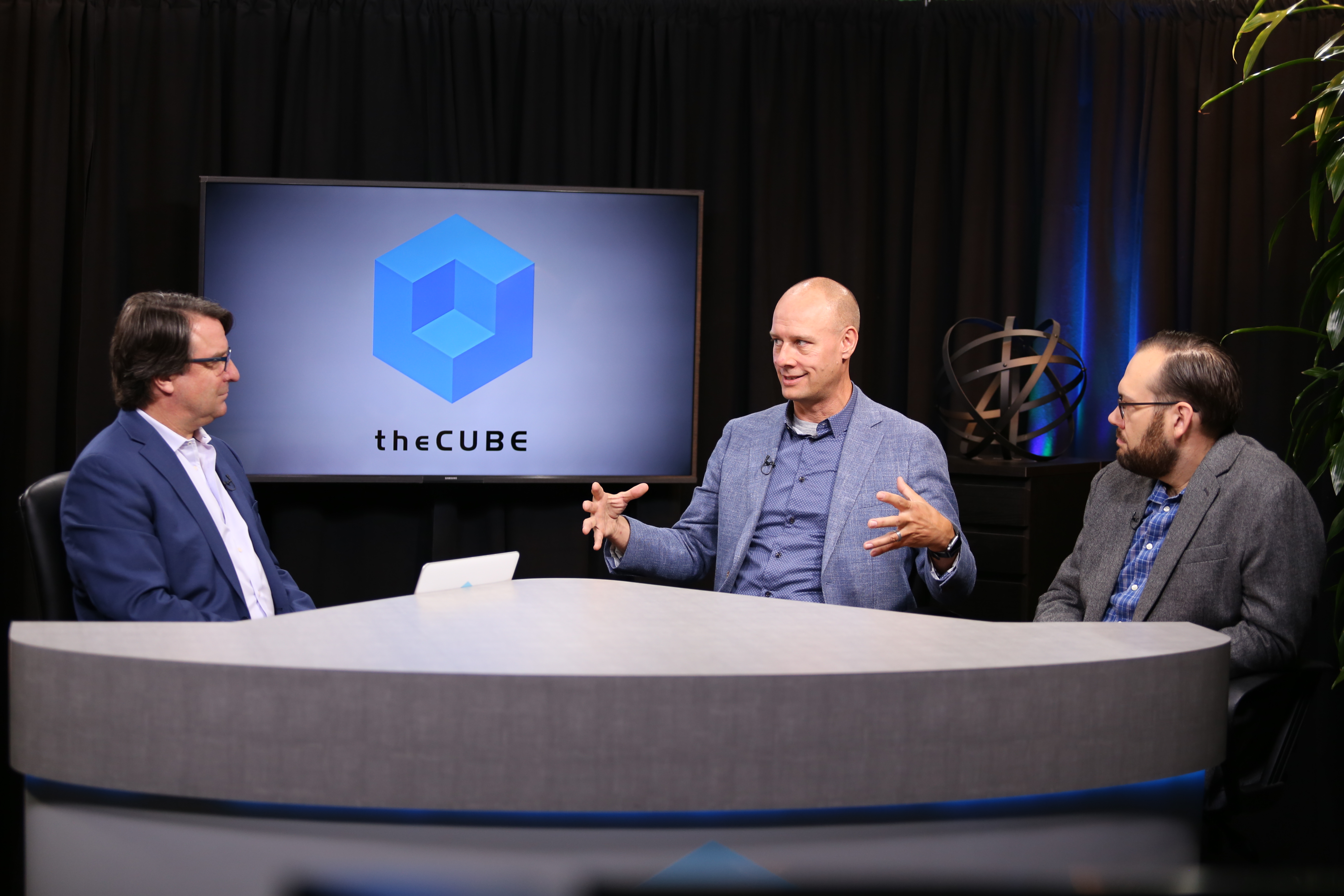 CLOUD
CLOUD
 CLOUD
CLOUD
 CLOUD
CLOUD
The network is down! Panic sets in. People stare around in shock. Commerce grinds to a halt. Connectivity is a necessity of modern life; the support system of the digital age.
Yet monolithic network operating systems are brittle “blobs” prone to break at the slightest touch. The Uptime Institute LLC “2019 Data Center Survey” lists network system failure as the second most-common cause of data center outages between 2016 and 2018. The cause is the increasing demand for edge devices that require the previously centralized network to spread itself across thousands of geographically dispersed locations.
“Distributed networking in massively distributed cases is a really big problem. What it does is it amplifies all of the problems that we coped with in networking for many years,” said Dom Wilde (pictured, center), chief executive officer of SnapRoute Inc.
Wilde and SnapRoute co-founder Glenn Sullivan (pictured, right), spoke with John Furrier (@furrier), host of theCUBE, SiliconANGLE Media’s livestreaming studio, in Palo Alto, California.
During an in-depth conversation on the evolution of network, they discussed how cloud-native technology brings agility to network operating systems (see the full interview with transcript here). (* Disclosure below.)
Cloud 1.0 was marked by the rise of software as a service and invisible infrastructure. Cloud 2.0 is distributed, brought about by the advent of artificial intelligence and the internet of things. Intelligent assistants, such as Apple’s Siri, were the first consumer apps to require real-time data analysis.
“The quicker that [Siri] gets me a response, the more likely I am to use it. The more data it gets about me, the better the answers get. Everything about it drives that the data has to be close to the edge. So that means the network has to be a lot bigger than it was before,” Sullivan stated.
From AI assistants to automated vehicles, real-time response is an essential element of IoT. But far from powering the digital revolution, network latency is putting the brakes on progress. “The network has always traditionally got in the way. It’s been an inhibitor to the speed of business,” Wilde stated.
SnapRoute’s solution is to bring agility to the network. The company recently released its Cloud Native Network Operating System, or CN-NOS, built from the ground up on microservices architecture.
“Containers have taken over. But you still see this situation where most of the applications that are infrastructure-based aren’t actually containerized themselves. So how can they build upon what we’ve learned from public cloud 1.0 and take it to that next level unless you start replacing the parts of the infrastructure with things that are containerized?” Sullivan asked.
SnapRoute’s CN-NOS is fully containerized using Docker — with a Kubernetes core for orchestration — and integration of third-party protocol stacks. Containerization eliminates problems associated with the monolithic network where change is a major event, allowing incremental, small changes on a day-to-day basis.
“You can do things without breaking the entire system. You can just replace a container; you can move on,” Sullivan stated.
This means network engineers can learn to operate like agile developers, avoiding massive quarterly overhauls and emergency 3 a.m. patches.
Another benefit of SnapRoute’s CN-NOS is that it opens the network to developers other than network specialists, according to Sullivan.
“Now you can take somebody who off the street might be a cloud-native Kubernetes expert and say, ‘Here’s a little bit of networking; go to play the network,’” Sullivan stated.
On the flip side, network engineers experience the same command line interface they are used to.
“But it’s doing all this cloud-native Kubernetes microservices containers stuff underneath … so they don’t have to learn it,” Sullivan explained. “The thing that I’m proudest of is the innovation that the team has been able to drive. Nobody else can really do what we’re doing with this mix of DevOps and Kubernetes and cloud-native engineering.”
Watch the complete conversation below, and be sure to check out more of SiliconANGLE’s and theCUBE’s CUBE Conversations. (* Disclosure: SnapRoute Inc. sponsored this segment of theCUBE. Neither SnapRoute nor other sponsors have editorial control over content on theCUBE or SiliconANGLE.)
THANK YOU